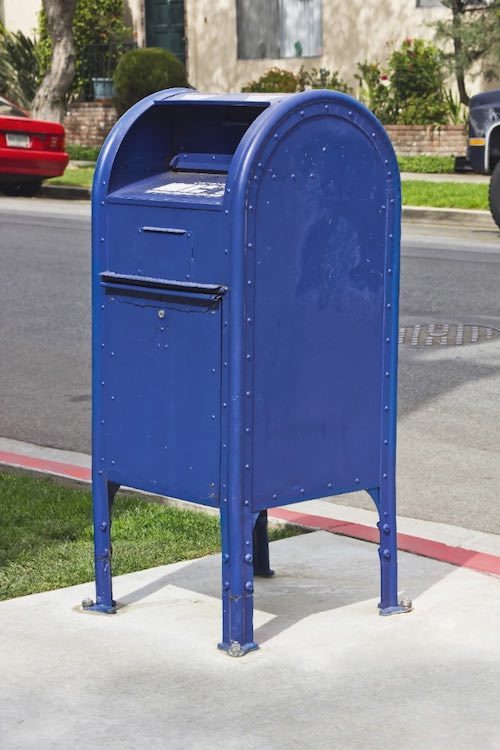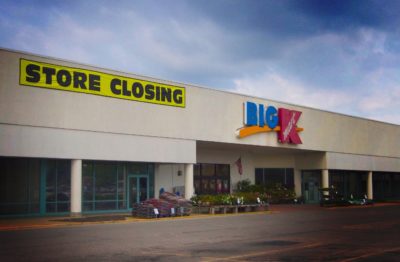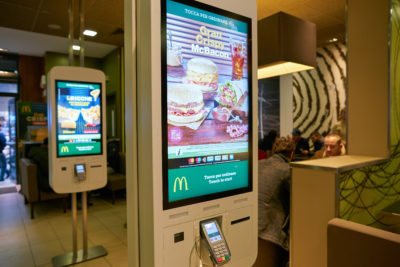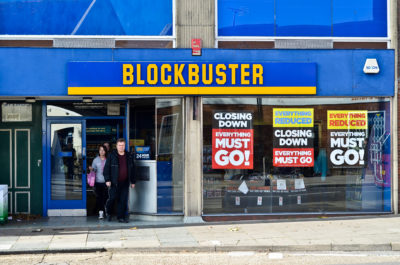As another year fades into the past, we thought it was a good time to look at a few things that are also becoming history. Some of these familiar items are almost gone, while others are just starting to vanish.
Neighborhood Mail Boxes
As mail volume is dropping, the U.S. Postal Service is adjusting their operations, and part of that move means taking out local drop boxes. Over 12,000 have been removed in the past five years.

Incandescent Lightbulbs
The move to fluorescent and LED bulbs was accelerated in 2014, when the manufacture of energy-inefficient incandescent bulbs was phased out. New LED bulbs last so much longer that General Electric, the company that introduced incandescents to the nation, has decided to leave the light bulb business. When first introduced, LEDs were pricey, but their price has dropped 90% since 2008, all but assuring the death of the incandescent for home use.
Cable TV
In its peak year, 2000, cable television had 68 million subscribers. According to The Atlantic, That number has now dropped to 49 million as more consumers cut the cord and turn to streaming video services like Netflix and Hulu (or old fashioned rabbit ears) for their entertainment.
Bank Branches
Mobile banking has meant convenience for customers, but empty lobbies for banks. The top three national banks, Bank of America, J.P. Morgan Chase, and Wells Fargo, now have over 20 million depositors using mobile banking on their home computers or smart phones. In response, these banks have closed nearly 300 bank branches in the past year. More than 10,000 branches in total have shuttered since the financial crisis, according to The Economist.
Textbooks

Traditional college textbooks can cost more than $200 apiece. To cut costs, students are buying cheaper ebooks, professors are compiling their own course notes electronically, and publishers are offering online courseware. The trend is creeping down the educational chain, as educators replace textbooks in grade and high schools with online media.
DVDs and CDs
It’s significant that computer manufacturers, the people who made CDs and DVDs popular, are now backing away from the technology. Both Mac and PC computers are building units without optical disc drives. Since Windows 8, Microsoft’s operating system no longer is programed to operate an internal DVD player. Consumers are moving their music and movies to cloud storage and relying more on streaming media companies for everything else. For better or worse, the corner video store is already a thing of the past.
Department Stores

Only two major department stores have shown growth over the past ten years: Kohl’s and Nordstrom. Almost all the others are suffering. In the past ten years, J.C. Penney’s revenues have dropped from $20 billion to $12 billion. Sears’ revenues in the same period have dropped from $30 billion to $15 billion. In general, brick-and-mortar retailers are facing hard times. In 2016, 2,400 retail stores announced their closing. In 2017, the number was 5,000. It is expected to hit 7,000 in 2018.
Keys
In the future, you won’t open your front door with a key but with your Bluetooth-enabled smart phone. Two of the biggest lock makers, Kwikset and Yale, are already working on keyless security systems. Auto manufacturers are also developing secure systems for your phone that will unlock and start your car.
Landline Telephones
Today, more than half of American households rely on cellphones instead of landlines. But don’t expect hard-wired phones to disappear too quickly. Businesses that have millions of dollars invested in their phone systems will keep landlines around until they can afford to go cellular.
Restaurant Servers

With Americans happy to order anything online, restaurant owners are starting to replace workers at their front counters with self-service kiosks. Panera Bread is already replacing cashiers with these devices. Some McDonalds have installed touch-screen technology to let customers order their meal or custom-build their burger. Wendy’s is planning to go in the same direction. Olive Garden now has tabletop tablets that allow diners to order and pay at their table without waiting for a server.
Blockbuster Video

With hundreds of their former stores standing empty across the country, Blockbuster Video is considered one of the country’s most noticeable business deaths. Yet the Blockbuster name hasn’t completely vanished. There are 10 operated Blockbuster stores in America; seven are in Alaska.
Featured image: Shutterstock
Become a Saturday Evening Post member and enjoy unlimited access. Subscribe now




Comments
Interesting feature. I’ve been aware of neighborhood mail boxes disappearing for several years now. At my local post office, there are two mail boxes like the one pictured above very near the entrance. I was going to drop several envelopes in one of them for mailing just last month, but did not.
There was a warning from the USPS (!) near the pick-up times label on both boxes that it wasn’t safe to deposit mail in it, do so at your own risk; they don’t recommend using it. I found this warning both weird and disturbing, but of course heeded what it said and went inside to use the pull down lever deposit. Some outside mail boxes at the post office now have narrow slits only. Apparently there are enough people that cannot be trusted now to make this necessary, unfortunately.
Don’t like the idea of bank branches disappearing—at all, and will NEVER do my banking over a smart phone or online otherwise. I’ll call my bank for a balance transfer, but that’s different. If full-on bank banks may be disappearing, hopefully more ‘satellite’ branches can be incorporated into grocery stores like Von’s, Ralph’s, Albertson’s & Gelson’s. I want that physical transaction slip, with far less worries of fraud.
Not happy traditional department stores are disappearing. I’m glad Nordstrom is doing well, but do not consider Kohl’s to be a ‘real’ department store Jeff. REAL department stores make you feel like you’ve just stepped into technicolor from the sepia tone. Robinson’s* (where I once worked in collections), The Broadway*, Bloomingdales and of course Neiman Marcus!
Macy’s and J.C. Penny have cheapened themselves with too much tacky advertising on TV—not good, but I don’t want them going away; Sear’s either. These numbers are bad. Too many stores like Ross, TJ Maxx and Marshall’s.
As far as keys go, I think they’ve got a long way to go before they’re no longer needed. Landline phones too—loved the Post’s feature on that last year. I saw this self-service kiosk at a McDonald’s in Tarzana last month. I can see their use in fast-food restaurants, but not for medium to fine dining.
*Defunct CA department stores. It was fun visiting and flirting with the girls at the fragrance bars on breaks and at lunch. My favorite is still ‘Eternity’ with ‘Cool Water’ and ‘Joop’ 2nd and 3rd. They also sold Godiva chocolates on that first floor, but most people still preferred the See’s Candies store across the street.